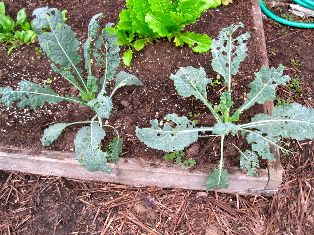
reference-image, l
(post, Harriet Fasenfest)
I love good food — the way it grows, the way it tastes, and, frankly, the way it looks. I have been buying and reading glossy cookbooks since the early 1970s and held the adage “The eye eats first” like a hammer over the head of my restaurant employees when they sent out breakfast plates that looked, well, worse for wear. Fact is, my staff used to mimic me. “What is this?” I would ask, holding a sad limp orange slice in my hand. “I tell you what it is: Garbage!” Sorry. Back then, subtlety was not my strong suit (as opposed to today? you might be asking yourself). Well, my point was, if it looked like a limp afterthought of a garnish, it was a limp afterthought of a garnish, and it wasn’t going out on any of the meals we would be serving that day. Not if I had anything to do with it. So I understand the value of setting a beautiful table and serving a plate of food that has aesthetic appeal. Beauty is beauty , even if it does have a cultural and social relativity. Nevertheless, today’s rant is about food and farm styling, and the way it betrays the truth of our everyday less-than-beautiful world. Pick up any coffee-table book on today’s “farm-to-table” living and tell me what you see. Better yet, tell me what you don’t see: real life — the hard, dirt-under-the-fingernail existence that defines life on a farm. You’re not seeing the gnarled carrots, the slug-eaten greens, the scabby apples, the molting chickens, the weed-infested yard, the cluttered kitchens, or the meals that are so much less than pretty than they are brilliant in their capacity to be served at all. Garnish? I’ll give you garnish! Growing or raising food and cooking that food for meals day in and day out (which is what I suggest in my book) is not always a Kodak moment. It is more about an ethic that is true and valuable but is all the more pragmatic and humble than runway perfect. [%image reference-image float=right width=400 caption="Sad kale."] Which is not to say I do not still attempt to bring beauty into my world. I often think, after working hours and hours, prodding and tweaking my tiny acres, that I will sit down and have a cool glass of tea under the roses climbing the arbor or even, go figure, stop and smell them. But generally my mind and body dash off to this or that perennial that needs deadheading or the beans that need picking or the tomatoes that need harvesting so that I can blanch, peel, seed, dice, and can them. I want to sit and enjoy the infinite and absolute beauty, but my time and life are filled with endless rounds of chores, and only at rare moments, in the right light, if I squint my eyes and edit my exhaustion, does it look quite as Photoshopped as the pictures I see in the fancy books. Do not get me wrong. This is not a case of sour grapes. But I think it’s important for folks who decide to grow food, cook meals, preserve the harvest, raise chickens, keep hives, or engage in any of the other skills related to the householding movement that they not assume it will look like the pictures. And when it doesn’t look like the pictures, take heart: There's no need to run back to the manicured and passive life of the observer. There’s value that goes beyond the glossy photos. Real life, with all its challenges and disappointments, is still worth the investment in time and energy. So let me be the first to advocate for real stories and real pictures. Let me be the first to say that householding is a utilitarian world that is so much more mud and guts than milk and honey. Which is not to say there is no beauty at all. No such thing. There is plenty of beauty to be found — if only not quite so prettily laid out as in the picture books.

reference-image, l